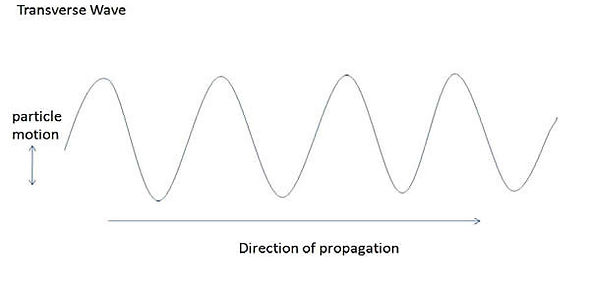Sound Wave Basics
Sound waves are longitudinal mechanical waves that propagate through a medium, such as air, liquids, or solids. These waves are essential in echocardiography, where they enable the creation of images of the heart using high-frequency sound. Understanding the principles of sound wave mechanics is crucial for interpreting echocardiographic images effectively.
Key Properties of Sound Waves
-
Frequency
Frequency refers to the number of cycles a sound wave completes in one second, measured in Hertz (Hz). In echocardiography, sound waves typically operate in the range of 1-10 million Hz (1-10 MHz), far above the range of human hearing (20 Hz to 20 kHz).-
Higher Frequency: Produces better image resolution but has limited penetration into tissues.
-
Lower Frequency: Penetrates deeper into tissues but provides lower image resolution.
-
-
Wavelength
Wavelength is the physical distance between two successive peaks or troughs of a wave. It is inversely proportional to frequency: higher frequencies result in shorter wavelengths. In medical imaging, shorter wavelengths provide finer detail, making wavelength a key factor in resolution. -
Velocity
Velocity is the speed at which a sound wave travels through a medium. It depends on the medium's density and elasticity.-
In soft tissue, sound waves travel at an average speed of approximately 1540 m/s.
-
Denser mediums like bone have higher sound velocities, while gases have slower velocities.
-
-
Amplitude
Amplitude measures the wave's height and represents the strength or intensity of the sound wave. Higher amplitudes correspond to louder sounds or stronger echoes in imaging.
How Sound Waves Interact with Tissue
When sound waves encounter tissue, several interactions occur that are critical for echocardiographic imaging:
-
Reflection
Reflection occurs when sound waves bounce off a boundary between two different tissues, such as between blood and the myocardium. The reflected waves, or echoes, are captured by the transducer to create images. The strength of the reflection depends on the difference in acoustic impedance between the two tissues. -
Refraction
Refraction happens when sound waves change direction as they pass through different mediums with varying densities. This can cause artifacts or distortions in the image. -
Scattering
Scattering occurs when sound waves encounter small structures, like red blood cells, causing the waves to disperse in multiple directions. Scattered waves can contribute to the Doppler signal used in blood flow analysis. -
Attenuation
Attenuation is the loss of sound wave energy as it travels through tissue, caused by absorption, reflection, and scattering. Higher frequencies attenuate more quickly than lower frequencies, limiting their penetration depth.
The Importance of Sound Waves in Echocardiography
In echocardiography, sound waves are generated by a transducer, which also receives the echoes reflected back from tissues. By analyzing the time it takes for echoes to return and their intensity, the echocardiographic system constructs detailed images of the heart. The interaction of sound waves with tissue properties provides crucial information about cardiac structure and function.
Practical Considerations
-
Choosing the Right Frequency: For imaging superficial structures like the valves, higher frequencies are used. For imaging deeper structures like the left ventricle in larger patients, lower frequencies are preferred to ensure sufficient penetration.
-
Minimizing Artifacts: Understanding how sound waves interact with tissue can help echocardiographers adjust their settings to reduce artifacts and enhance image quality.
By mastering the principles of sound wave mechanics, echocardiographers can optimize imaging techniques and improve diagnostic accuracy, making sound waves an indispensable tool in cardiac imaging.
Sound waves are mechanical waves meaning they have to interact with something (like air particles or tissue) to propagate. This is as opposed to say electromagnetic waves like light which can travel is a vacuum.
Sounds is also a longitudinal waves. Longitudinal means that the direction of the vibrations are in the same direction or parallel as that of the propagation (think of a slinky toy for example). They have areas of compressions (higher density particles) and rarefactions (lower density particles) as shown below where each line represents a set of particles.

Transverse waves on the other hand have vibration perpendicular to the direction of propagation. Think of a ripple in the water as a rock is thrown into it or a rope that is being moved up and down. A diagram of a transverse wave is as shown below.

For simplicity we (and many ultrasound texts) will represent sound waves as this sinusoidal type of wave, even though it is not technically correct, because it is an easier visual representation to illustrate many properties. Just keep in mind that sound is a longitudinal wave.